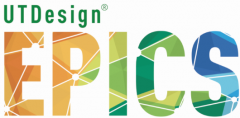Materials from McMaster came in, and it appears as though we’ve ordered all the right parts! This should be a given, but that’s not the case with every project. Assembly is a little tricky, but the folks in the fab lab have been beyond helpful. We have decided to bring in the depth and width of the environment by 6″ (from 2.5′ to 2′) to better fit the school desks that Kids-U now wants to house these on. We have assembled two frames, which still need some added corner-protection for safety. Great progress so far, staying on track with the aggressive schedule.





